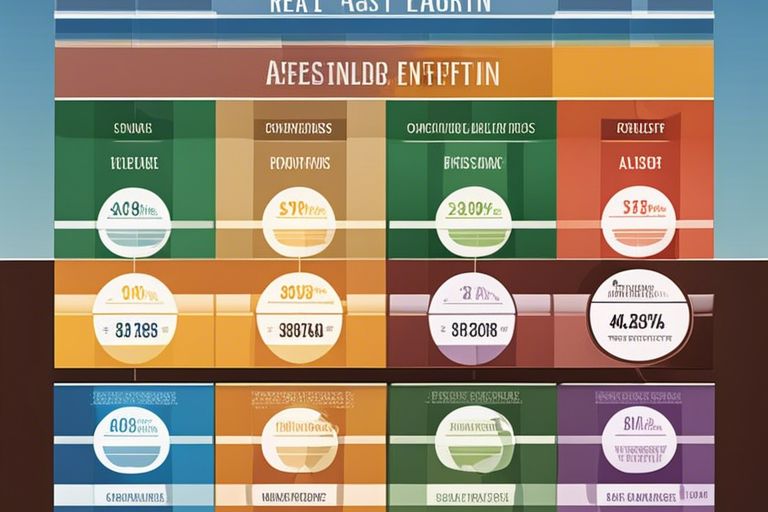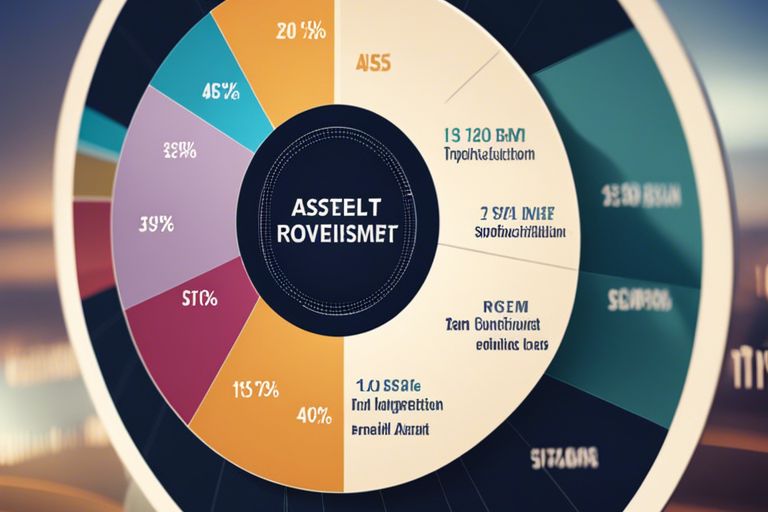Investments play a crucial role in securing financial stability and growth for the future. One key strategy to minimize risk and maximize returns is through proper asset allocation. By effectively diversifying your investments across different asset classes, you can protect your portfolio from market volatility, reduce unnecessary risk, and optimize your overall returns.
Key Takeaways:
- Diversification is key: Proper asset allocation spreads risk across different types of investments, reducing the impact of any one investment’s performance on your overall portfolio.
- Consider your risk tolerance and investment goals: It’s important to align your asset allocation with your risk tolerance and investment goals to create a balanced and diversified portfolio that meets your financial objectives.
- Regularly review and adjust your asset allocation: Markets and individual investments can fluctuate over time, so it’s necessary to regularly review and adjust your asset allocation to stay aligned with your investment strategy and goals.
Understanding Investment Diversification
The Concept of Diversification Explained
The key principle behind diversification is not putting all your eggs in one basket. By spreading your investments across different asset classes, industries, and geographic regions, you can reduce the risk of significant losses from any one investment. Diversification is about building a portfolio that is resilient to market fluctuations and can help you achieve more stable returns over the long term.
Benefits of Diversifying Your Investments
Your investment portfolio can benefit greatly from diversification. By incorporating various asset classes such as stocks, bonds, real estate, and commodities, you can lower your overall risk exposure and potentially enhance your returns as different asset classes perform differently under various market conditions. Diversifying your investments also helps to protect your wealth from the unforeseen events that can impact specific industries or sectors.
Asset Allocation Fundamentals
Defining Asset Classes
For effective asset allocation, it is crucial to first understand the different asset classes available for investment. Asset classes can include stocks, bonds, real estate, commodities, and cash equivalents. Diversifying your portfolio across various asset classes can help reduce risk and improve overall returns. Each asset class has its own characteristics, volatility, and profit potentials.
Risk Tolerance and Investment Horizons
Investment decisions should be guided by your risk tolerance and investment horizon. Your risk tolerance is the level of volatility and uncertainty you are comfortable with in your investments, while your investment horizon is the length of time you plan to hold your investments. Aligning your asset allocation with your risk tolerance and investment horizon is crucial for achieving your financial goals.
Strategies for Effective Asset Allocation
The Role of Correlation in Diversification
Keep in mind that correlation plays a crucial role in diversifying your investment portfolio effectively. Correlation measures how assets move in relation to each other. It is important to invest in assets that have low correlation to each other, as this can help spread your risk more effectively. By including assets that do not move in tandem, you can potentially reduce the overall volatility of your portfolio.
Asset Allocation Models for Different Investor Profiles
Any successful asset allocation strategy begins with identifying your investor profile. Investors can range from conservative to aggressive, depending on their risk tolerance and investment goals. Asset allocation models tailor your investment mix based on your risk appetite, time horizon, and financial objectives.
The asset allocation models for different investor profiles can range from conservative portfolios that prioritize capital preservation to aggressive portfolios that seek higher returns through greater exposure to equities. It’s crucial to align your investment strategy with your risk tolerance and financial goals to achieve the optimal balance between risk and return.

Monitoring and Rebalancing Your Portfolio
To ensure that your investments are effectively diversified, it is necessary to regularly monitor and rebalance your portfolio. According to Best Practices For Effective Portfolio Diversification, proper monitoring and periodic rebalancing can help you stay on track with your investment goals and manage risk.
When to Review and Rebalance
Rebalancing your portfolio should be done at regular intervals and triggered by significant market movements or changes in your financial situation. It is crucial to review your portfolio on a quarterly or annual basis to ensure that your asset allocation aligns with your investment objectives.
Tools and Techniques for Portfolio Management
Any successful investor understands the importance of utilizing tools and techniques for effective portfolio management. From sophisticated software programs to simple spreadsheets, there are various resources available to help you track your investments, analyze performance, and make informed decisions. Portfolio rebalancing tools can automate the process and ensure that your asset allocation remains in line with your desired risk level and investment strategy.
Overcoming Common Diversification Pitfalls
Misunderstanding Asset Classes
Common mistakes in diversification often stem from a misunderstanding of asset classes. Investors may incorrectly perceive certain investments as belonging to different asset classes when, in reality, they are closely correlated. This can lead to a false sense of diversification and leave the portfolio exposed to similar risks.
Avoiding Over-Diversification
On the other end of the spectrum, over-diversification can dilute the potential returns of a portfolio. It is crucial to strike a balance between spreading investments across different assets and sectors while ensuring that each addition truly contributes to risk reduction. Having too many investments can lead to increased complexity, higher transaction costs, and difficulty in monitoring the performance of individual assets.
Understanding the optimal level of diversification for your investment portfolio involves assessing your risk tolerance, investment goals, and time horizon. By carefully selecting a mix of assets that behave differently under various market conditions, you can effectively reduce the overall risk of your portfolio while potentially enhancing returns. Keep in mind, diversification is not just about spreading your investments – it’s about strategically allocating them in a way that maximizes the benefit of each asset class.
Final Words
To wrap up, effectively diversifying your investments through proper asset allocation is crucial for optimizing returns while minimizing risk. By spreading your investments across different asset classes, you can create a well-balanced portfolio that can withstand market fluctuations and economic uncertainties. Remember to regularly review and adjust your asset allocation to ensure that it aligns with your financial goals and risk tolerance. With careful consideration and strategic planning, you can build a robust investment portfolio that will serve you well in the long run.
FAQ
Q: Why is proper asset allocation important for diversifying investments?
A: Proper asset allocation is crucial for diversifying investments because it helps spread risk across different asset classes, such as stocks, bonds, and real estate. By allocating your investments effectively, you can reduce the impact of market volatility and enhance portfolio stability.
Q: How can investors determine the right asset allocation for their portfolio?
A: Investors can determine the right asset allocation for their portfolio by considering their financial goals, risk tolerance, and investment time horizon. A common approach is to use the “age-based rule,” where you subtract your age from 100 to determine the percentage of stocks in your portfolio. This rule provides a starting point that can be adjusted based on individual circumstances.
Q: What are the potential risks of not diversifying investments through proper asset allocation?
A: Not diversifying investments through proper asset allocation can expose investors to concentration risk, where a significant portion of their portfolio is invested in a single asset class or sector. This lack of diversification can magnify losses during market downturns and limit long-term growth potential. It is necessary to regularly review and adjust your asset allocation to ensure it aligns with your investment objectives and risk tolerance.




